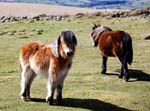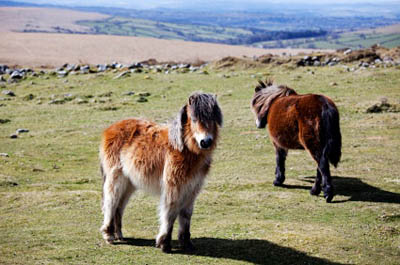Where to stay in Britain: April on Exmoor
Country Life's guide to visiting Exmoor: What to eat, where to stay, wildlife to look out for and a certain breed of pony


Local food in Exmoor
The raised venison pie is closest to the old-fashioned pasty made from hot-water crust or sturdy short-crust. The pastry is moulded, by hand or by machine for small pies, or by hand in large, elaborate fluted moulds for large pies.
A filling of roughly chopped or coarsely minced venison is used; shin is quoted as a good cut. Black pepper and salt are the usual seasonings; other spices may be added to the maker's taste, and some recipes include redcurrant jelly.
Where to stay
The juxtaposition of heather-clad moor and wild coastline gives Exmoor its singular magic.
For a cosy cottage
The Dunster B&B Millstream Cottage (01643 821966; www.millstreamcottagedunster.co.uk) is close to the coast, and guests can work off smoked haddock and poached eggs on a stroll to the National Trust's Dunster Castle.
Exquisite houses, the beauty of Nature, and how to get the most from your life, straight to your inbox.
For walking
More walking-along the wooded valley of the River Mole or the moor-can be enjoyed from the peaceful Heasley House (01598 740213; www.exmoor-hotel.co.uk). This Georgian dower house won The Good Hotel Guide's Devon Hotel of the Year 2010.
For hunters
Try the friendly Royal Oak Inn at Withypool (01643 831506; www.royaloakwithypool.co.uk), on the River Barle, or The White Horse, Exford (01643 831229; www.exmoor-whitehorse.co.uk), with its famous Dalesman Bar.
For a civilised stay
In the coastal hamlet of Martinhoe, The Old Rectory Hotel (01598 763368; www.oldrectoryhotel.co.uk) is a welcoming retreat with a reputation for great hospitality.
For a hidden gem
Hidden in the village of Kentisbury on the edge of the moor is Georgian gem Beachborough Country House (01271 882487; www.beachboroughcountryhouse.co.uk), set in four acres of gardens.

Nature notes
What to look for
On the coast, there are guillemots, razorbills, kittiwakes and ravens, as well as rare peregrine falcons, and curlews and oystercatchers on the salt marshes at Porlock. There is plenty of fish-including salmon and trout-in Exmoor's 300 miles of rivers and streams, but the area is best known for some of its larger residents: the privately owned but free-ranging Exmoor ponies, Britain's oldest native pony, and healthy red deer population. But it's also an important habitat for butterflies: the Chains Geological Conservation Review site on north Exmoor has a large population of the nationally rare heath fritillary.
Country Life is unlike any other magazine: the only glossy weekly on the newsstand and the only magazine that has been guest-edited by His Majesty The King not once, but twice. It is a celebration of modern rural life and all its diverse joys and pleasures — that was first published in Queen Victoria's Diamond Jubilee year. Our eclectic mixture of witty and informative content — from the most up-to-date property news and commentary and a coveted glimpse inside some of the UK's best houses and gardens, to gardening, the arts and interior design, written by experts in their field — still cannot be found in print or online, anywhere else.
